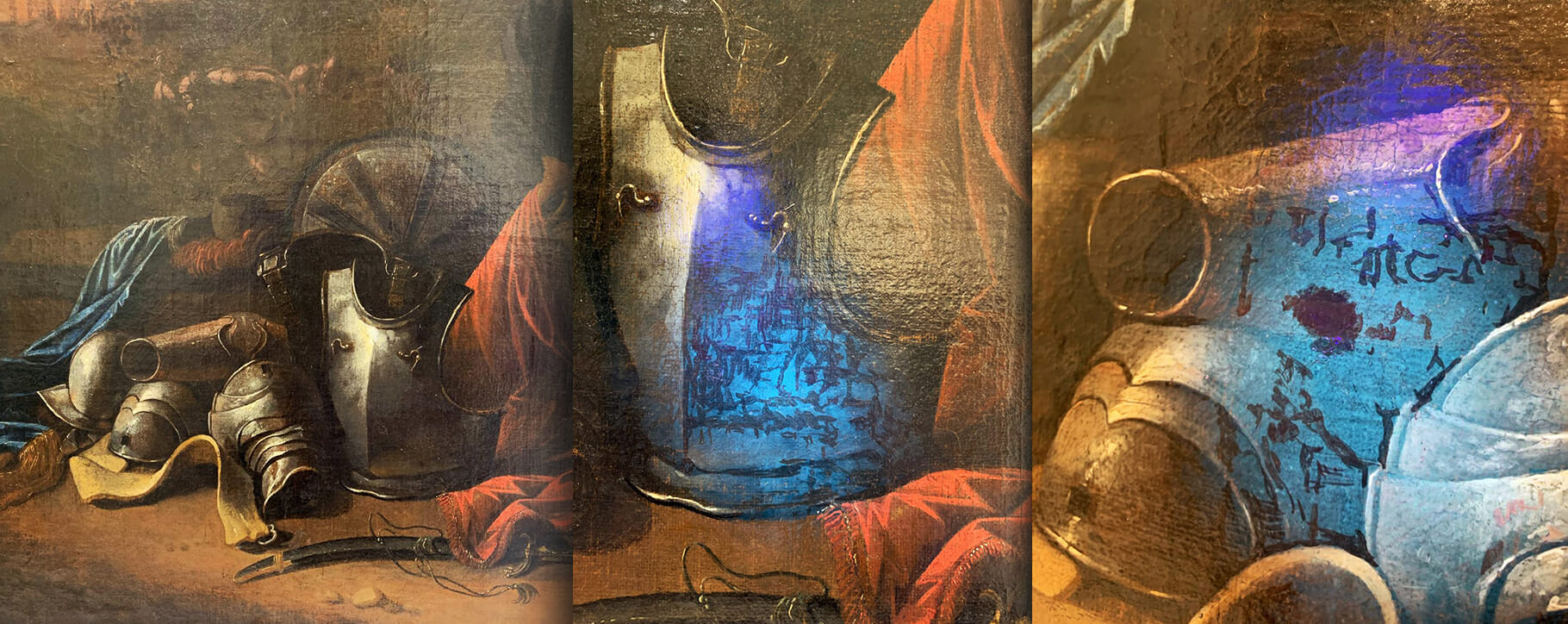Every painting has a history, from an artwork’s origins to its current condition, paintings are often passed between art collectors and family members. Understandably, some paintings have a more turbulent conservation history than others. There can be clear signs of what that history has been and whether a painting has ever undergone past restoration. Such visual signs on the artwork can include the stamps from conservation studios, patches where tears have been repaired or a secondary canvas added to the back of the painting after being lined.

It is not uncommon for us to receive paintings that have previously been restored. We are often asked whether anything can actually be done if a painting has already undergone a campaign of restoration.
Examples of prior restoration that we see on paintings that come to us include:
- Unsightly or failed previous restoration requiring reversal and corrective work.
- Prior re-touching in keeping with artist’s intentions or in a less sympathetic manner.
- Previous tear repairs requiring corrective restoration to address visual disturbances, including visible repairs, uncharacteristically raised surfaces or where pigments have not been sympathetically matched.
- Previously lined paintings which are showing signs of failing or have since suffered tear damage to either the original canvas, lining canvas or both.
Before our conservators begin the restoration, we assess each artwork including under UV light. This individual assessment will be able to determine what has caused the previous restoration, the treatments that have been carried out and how we are able to further help.

If a painting has been lined already and sustained new damage, it is important to ascertain whether the damage has affected the original canvas layer or the newer canvas. If the newer lined canvas has been torn, the tear should be repairable without removing this canvas. If the original canvas with the artwork on is torn, but the newer canvas is intact, this presents more problems possibly requiring the newer canvas to be removed.
We tailor restoration for each artwork accordingly, drawing on its history and current condition and it is vital to maintain the integrity of the painting while carefully conserving for the future.






